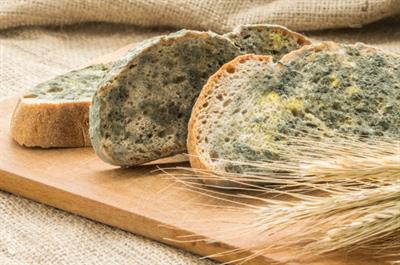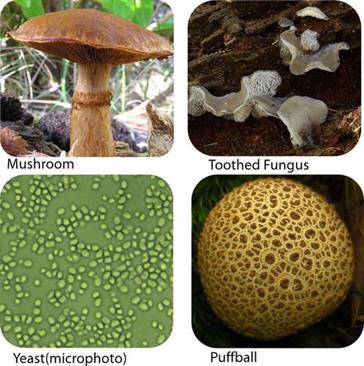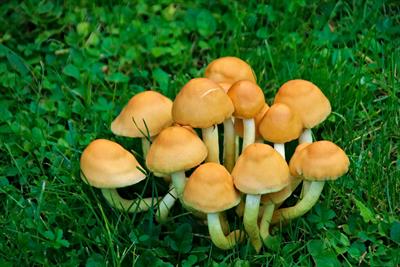PDF chapter test TRY NOW
The most common microorganisms available in our home are present in bread slices and curd. If you look at a piece of bread after its expiration date, you will find a greyish white-coloured layer formed over it. It is because of the formation of fungi.
Activity: Presence of fungi on moist bread:
- Take a fresh piece of bread and cut it in half.
- Wet it with water and set it aside for 3 to 4 days in a warm place.
- After a few days, you will probably notice a white cotton-like thing growing on the bread. It is a fungus known as bread mould.
- Prepare a bread mould slide with the aid of the teacher and examine it under a microscope.

Spoiled bread due to the bread mould
Fungi (singular:fungus) organisms are classified under kingdom fungi. They are non-green because they lack chlorophyll and hence they are unable to produce food by photosynthesis.
The most important and notable fungi are Saccharomyces cerevisiae(yeasts - used in bakeries), Penicillium and Agaricus (mushroom). Similar to algae, fungi are also found mostly in water-bodies and moist areas.
Here are a few examples of fungi:

They are non-motile,heterotrophic, cannot synthesise their food for their nutritional needs, and depends on the living host or dead and decaying organic matter. By absorption, they obtain the food from their host.
Based on nutrition, fungi can be classified into two types.
Saprophytic fungi
Like animals, fungi can acquire food from animals, but they do so in a different way. In comparison, animals digest their food inside the body.
Some fungi digest their food by releasing enzymes that break down the food into simple compounds, which the fungus then absorbs the nutrients through its cell wall. Such fungi are called saprophytic fungi.
For nutrition, they usually eat dead and rotting plant and animal matter.

Mushrooms
Parasitic fungi
The fungi survive on living hosts are called parasite; they infect the host by causing various diseases. Such fungi can harm the host organism.
Example:
Leaf rust, caused by the parasitic fungus called Puccinia triticina, is the most common wheat disease, and Cryphonectria parasitica is a parasitic fungus of chestnut trees.

Left to right: Leaf rust disease in a wheat leaf and chestnut blight disease in the stem of chestnut tree
- Mycology is the study of fungi with their genetic and biochemical properties.
- The only unicellular fungus is yeast, while the majority of other fungi are macroscopic.
Important!
Reference:
https://www.freepik.com/premium-photo/mold-growing-rapidly-moldy-bread-green-white-spores_7825799.htm
https://upload.wikimedia.org/wikipedia/commons/0/06/Cryphonectria_parasitica_chestnut_blight.jpg
https://www.flickr.com/photos/cimmyt/5071562855
